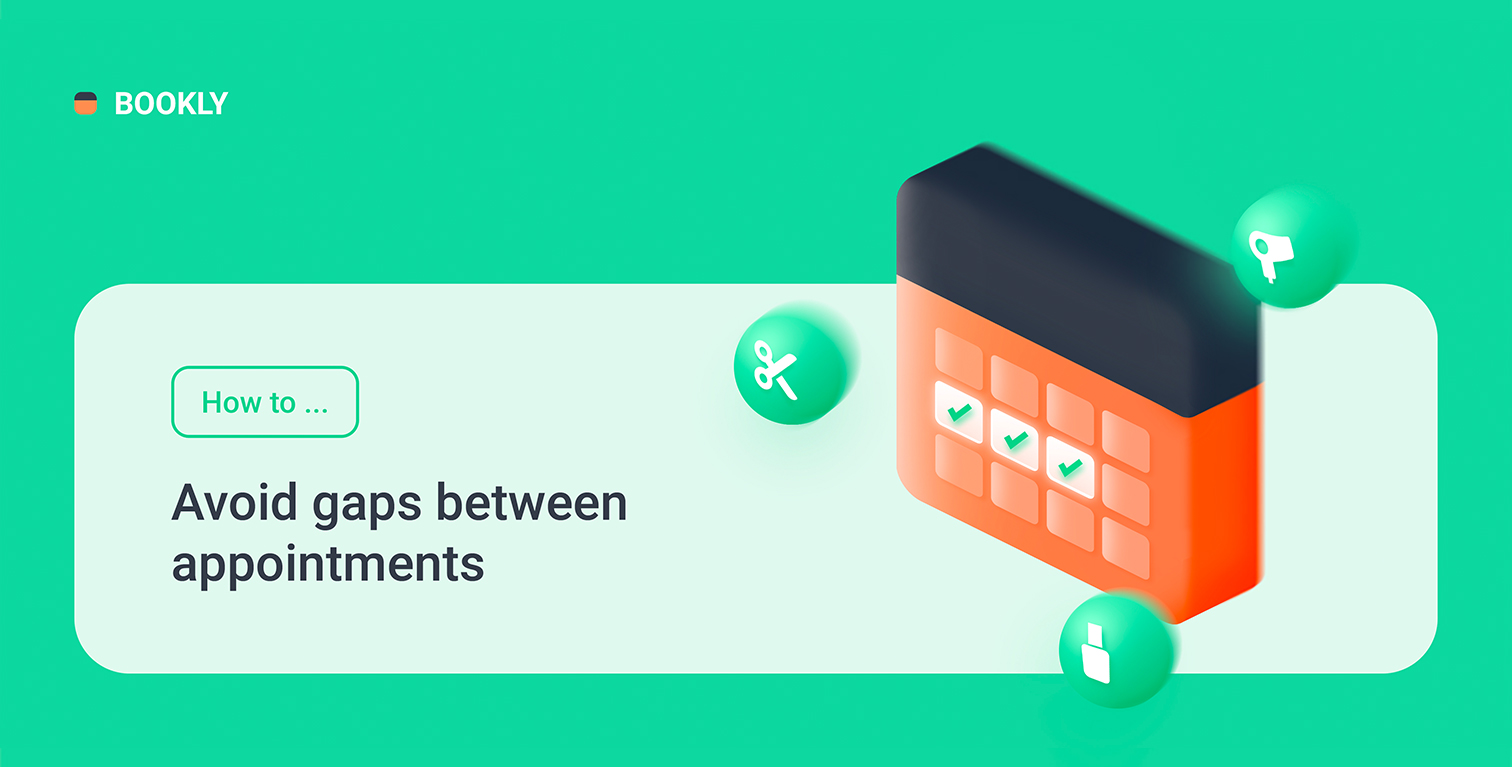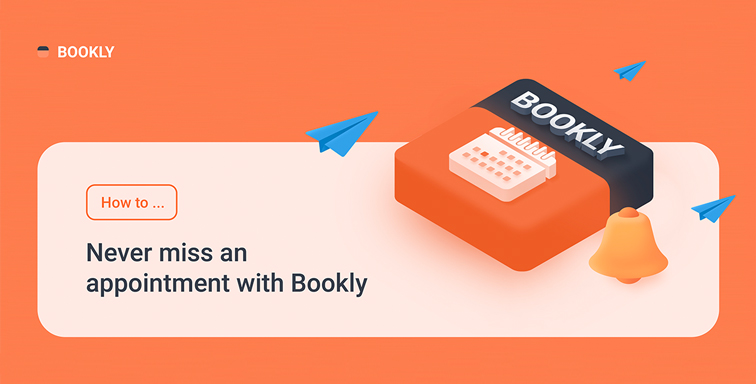
2020 Guide to Influencer Marketing
Two thirds of marketers plan to increase spending on influence marketing in 2020. Influencers have become a powerful channel for brands to increase awareness and interest for their products. In an era where traditional advertising is experiencing decreasing reach and credibility, influencer marketing is more important than ever before.
In this 2020 guide to influencer marketing, we’ll deep dive into influencer marketing, detailing how you can establish a winning influencer marketing strategy on each of the major social media platforms.
What is influence marketing?
Influencer marketing involves the endorsement and product mentions from individuals (influencers) who have a dedicated following and credibility within their niche. Influencer marketing is powerful because it enables brands to leverage the credibility of the influencer for their own products and services.
The key to this form of marketing is of course influence. These individuals have the power to influence their followers to make a buying decision. This is due to their authority, expertise or relationship that they have with their audience. If an influencer’s audience and your own target consumer align, then influencer marketing can be a powerful channel to reach them.
The idea of celebrity endorsement has a history as long as modern capitalism itself. Mark Twain endorsed his signature pens, John Wayne helped to sell chocolate and more recently George Clooney became the face of Nespresso. While celebrity marketing still certainly exists, the 21st century has given birth to influencer marketing.
The concept of using influencers in marketing was born out of the internet but really it is a child of the social media era. Influencers are a new type of micro-celebrity. Outside of their particular niche, an influencer may be largely unknown. But within their own particular field of influence they are often just as widely regarded as any Hollywood star.
The internet has fragmented the mainstream media. This is the era of the “long-tail” where audiences can easily find niche content about their special interests. This has in turn created niche celebrities or influencers. Social media has given these influencers the ability to connect and directly interact with their audiences.
While an influencer’s reach might not be as wide as a traditional celebrity, it is often much deeper. On top of this they may have much greater credibility with that niche. A celebrity using a product may imbue some of their glamour upon that product. But an influencer whose fans actually know that they use that product can provide a much greater inducement to buy.
Why use influencers?
As we’ve already seen influencers have a direct connection with their fan base that make them highly persuasive when recommending products. It could seem tempting then for a brand to create its own direct relationship with their customers, foregoing the need for the influencer.
This is something that a number of brands have been able to achieve. However, developing that kind of authentic relationship with an audience takes time. Influencers have typically spent years building their own credibility with their fans.
This is why it can be a mistake to tightly control the message that you want your influencers to convey to their audience. The influencer knows how to speak to their fans and will seem more credible when they do so authentically.
The decline of social media advertising
Social media advertising is undoubtedly effective. Research has shown that 48% of consumers have bought a product after seeing a social media ad. However as with many forms of advertising consumers are growing weary. Studies have shown that three quarters of people said they were tired of social media ads.
Going directly to influencers on social media is one solution to this problem. It is important to disclose that branded content is a form of advertising (see disclosure requirements below). Regardless, this is still content produced by the influencer. It will be consumed by their audience, with a similar level of credibility, as their non-branded content. Thus, influencers on social media help to avoid the growing issue of “advertising blindness” and ad blockers.
Types of influencer marketing relationships
There are two primary types of relationship between a brand and an influencer; organic and paid. An organic relationship is where an influencer chooses to endorse or share information about a product without being paid. In this case a free sample of the product may still be provided but there is no direct exchange of money for the promotion. The second type of relationship is where the brand directly pays the influencer to share promotional content.
The benefit of an organic relationship is of course that you don’t need to pay for the promotion. Depending on the relationship between the influencer and the brand, the endorsement may also be perceived as being more authentic.
The downside to an organic relationship is that the amount of time spent by the influencer on the endorsement will typically not be as extensive, compared to a paid relationship. Typical ways an organic influencer may help a promotional campaign include sharing content, such as retweeting, or creating video, post or article discussing or reviewing the product.
With a paid relationship it is usually much more clearly defined what the influencer will deliver and on what time schedule that will do it. The size and length of the engagement can vary. This could be everything from a single tweet or post, through to a series of content over an extended period of time.
Even if you are paying an influencer it doesn’t necessarily mean that you will have complete control over the content that they share. An influencer will still want to protect their relationship with their audience. This means that they may choose not to endorse a product that they don’t believe matches the quality expected or values of their audience.
Profitability of influencer marketing
In a study conducted by Tomoson, marketers reported that for every $1 spent influencers made a return of $6.50. The same study stated that marketers rated influencer marketing as their fastest growing online customer acquisition channel, above both email and search engine marketing.
The reason is for the high return on influencer marketing is due to high factors; persuasiveness and relatively low cost. In research published by Twitter it was found that 49% of the respondents looked to influencers for making a purchasing decision. Notably, the research showed that when a Twitter user was exposed to branded tweets their intent to buy increased by 2.7x. However, when they were exposed to both a branded and influencer tweet that factor rose to 5.2x.
What this shows is how persuasive communication from influencers can be. A consumer who receives a recommendation about a product or service from an influencer is significantly more likely to buy, compared to receiving the same communication via traditional advertising channels.
The second factor for the high return on investment for influencer marketing is the potentially low cost to advertisers. The key word here is “potentially” because the actual cost to advertise using an influencer can vary significantly.
Size of the influencer marketing industry
The influencer marketing industry has grown rapidly over the past three years. In 2017 the industry was valued at approximately $2 billion annually. By 2021 that number is predicted to reach $10 billion.
The influencers lifestyle has made it a highly attractive way for people to earn either a full-time income or supplement their main salary. An influencer’s lifestyle is sense as glamorous, with the opportunity to receive free products or services. There is also the prestige of “celebrity” even if this is on a relatively small scale.
The success of influencer marketing as a promotional strategy and the relative attractiveness of the influencers lifestyle, means that the market is likely to enjoy continuing growth in the decade ahead.
How to choose influencers
Selecting the right influencer(s) is key to the success of your marketing campaign. An influencer that might be perfect for one product, will be a complete failure with a different promotional campaign.
If you haven’t already done so you should have clearly identified your own buyer persona. If you don’t understand who exactly buys your product, you won’t be able to select an appropriate influencer .
Once you understand who you want to target here are three key questions you need to ask yourself when selecting an influencer.
Do they align with your product?
The first, and perhaps most critical question, is do they closely align with your product. It’s important to do some research here because an influencer that may seem on brand could potentially be inappropriate. It’s worth spending time looking at their feed and see how close the content and interests of their audience align with the buyer persona you have defined.
What is their reach?
Next you need to determine the reach of your influencer. Your marketing campaign will have a certain sized audience that it wants to impact. This will help determine how many influencers you will need to work with in order to achieve your goals.
What is the cost?
The cost of working with influencers can vary significantly. Understand what that influencer will charge in order to share your marketing message.
There will be the need to balance off some of these three factors. An influencer who has a smaller reach, but whose audience exactly matches your buyer person, may be a better investment than an influencer with a larger reach but who less closely matches your target customer. Likewise, you may be willing to invest more in an influencer who is able to deliver a better return on your investment.
Goals for your influencer campaign
Before you even start talking to influencers you should clearly define the goals for your influencer campaign. The goals that you set will define which influencers are best to work with. They will also allow you to measure the success of your campaign once it is complete.
Working with influencers is typically a marketing channel that extends beyond a specific campaign. It’s important therefore to understand how your campaign has performed, so you are able to refine and optimise your influencer marketing in the future. As the saying goes “what gets measured, gets improved.”
Common goals for an influencer marketing campaign
The exact goal for your influencer campaign will vary but some common goals include increasing:
- Sales of a specific product or service
- Brand awareness or perceived value of a product or service
- The number of social media followers on a particular platform
- The number of visitors to your website
- Sign-ups for your email newsletter
As noted above your goal will impact which influencers you work with. One influencer may be more effective at increasing overall awareness of your brand or the number of social media followers. Another influencer may have a smaller impact on your social media following, but actually lead to higher conversions of your product.
Assigning KPIs
Once you have chosen the goal for your influencer campaign, the next step is to assign a KPI. This a measurable benchmark that you will use to evaluate the success of your campaign.
As an example, if your goal is to increase the number of sign-ups to your newsletter, how many additional sign-ups are you hoping to achieve? If you want to increase sales of your product, how many more sales do you want to make? Where possible aim to track traffic sent by the influencer, so that you can evaluate what impact they directly had on achieving these KPIs.
Types of Influencers
There are three broad groups of influencers you can work with. These are micro-influencers, macro-influencers and celebrity influencers.
Celebrity Influencers
As mentioned earlier, celebrity influencers existed long before social media or even the internet. In fact the idea of celebrity endorsement is as old as the media industry itself. Celebrity influencers include household names such as Beyonce, Justin Bieber, Kylie Jenner, Ariana Grande and Serena Williams. The amount of reach these celebrity influencers have is often staggering. Footballer Cristiano Ronaldo has 213 million followers on Instagram, musician Selena Gomez has 173 million.
With such huge audiences any promotion can have a huge impact on a brands success. The nature of those massive audiences also means that is also incredibly diverse. Given the cost of using a celebrity influencer and the relatively untargeted nature of the audience, the actual return on investment may be lower compared to some other more targeted forms of influencer marketing. That said, if a business is looking for a big bump in their numbers and has the money to invest, then a celebrity influencer may be the best approach.
Macro-influencers
A macro-influencer is like a “celebrity” but within their own particular niche. A macro-influencer will often have a massive following on social media. But, ask someone from outside that niche who the macro-influencer is and they will have no idea.
This is what differentiates a macro-influencer from a celebrity influencer. Very few people haven’t heard of Kim Kardashian or Justin Beiber. A macro-influencer could have millions of followers but still be nowhere near a household name.
The power of a macro-influencer is that their influence is targeted and often stronger than that of a celebrity. Because a macro-influencer appeals to a specific type of audience it is easier to identify if your product is a close match.
Because of the size of a macro-influencers audience, they can be expensive to work with. While they may not charge as much as a celebrity influencer they will often be out of budget for many smaller or medium sized businesses. A macro-influencer will be approached more frequently to promote products. As a consequence they will be more selective with which brands they choose to work with and the way they represent those products to their audience.
Micro-influencers
Micro-influencers are the type of influencer that most brands will work with. Like a macro-influencer, a micro-influencer will appeal to a niche audience. The difference is that a micro-influencers audience will be significantly smaller than that of the macro-influencer.
An additional benefit of this type of influencers for brands is the level of engagement with their audience. A celebrity influencer is unlikely to answer questions that their audience might have about a product that they endorse. A micro-influencer on the other hand who may have an audience only in the thousands, is far more likely to take the time to respond to these types of questions. Prospective customers who have their concerns about a product addressed are far more likely to make a purchase.
Multiplatform tools for finding influencers
Here we’ll look at some of the tools that you can use across different social media platforms to identify relevant influencers.
FollowerWonk
Followerwonk allows you to quickly find and compare influencers. Enter keywords appropriate to your industry to find matching influencers. Followerwonk then lets you compare social graphs of different influencers in order to identify the best ones to work with.
Hootsuite
Hoostuite is a social media scheduling and analysis tool. Using Hootsuite you can track conversations and trends across multiple social media platforms including Twitter, Facebook and Instagram. By monitoring conversations that relate to your industry you can see which influencers are most active and having the biggest impact. This also serves as a useful research tool to find influencers that are sharing content that matches the type you would like to create.
Contacting your influencer
Once you have identified a list of influencers you want to work it is time to make contact. For smaller micro-influencers it is often possible to direct message them on the social media platform that they use. In the case of macro-influencers, they may provide a contact email address for brand inquiries.
It can be tempting to mass message a number of influencers. However, it is worthwhile being more selective about the influencers that you want to work with and take the time to create a personal contact message. Influencer marketing is about building relationships and so you want to ensure yours starts in the right way.
Disclosure requirements
The requirements for disclosing the relationship between an advertiser and the influencer will vary by country. It is important that you understand what these disclosure requirements are for where you will be advertising.
Following the wake of the Fyre Festival scandal the Federal Trade Commission is looking at influencer/brand relationships even more closely. Many influencers still do not disclose all of their promoted content as being paid for. There may be a perceived benefit to a non-disclosed advertisement, as it can be viewed as more “authentic”. However, the exposure to legal risk means it isn’t advisable to ignore the requirements for disclosure.
Two common hashtags used to designate the post as paid for are #sponsored and #ad. It is important not to try and bury these at the end of an overlong description. These hashtags should be near the start of the text of the post.
To meet FTC requirements if the influencer post is in the form of the view review then the influencer needs to disclose both verbally and in writing the relationship with the brand. This disclosure needs to be within the video itself and not just in the description below the video.
Avoiding Influencer over exposure
It can be tempting for influencers to cash-in on their fame and accept as many paid posts as possible. For a brand this can be harmful in a number of ways. An influencer who is posting paid posts too frequently is likely to be damaging their relationship with their audience. As a brand what you are primarily purchasing from the influencer is access and credibility with this audience. As a consequence over-promotion can lessen the value of your paid ad.
Another issue with working with influencers who accept too many paid promotions is that your brand can become associated with businesses you might not otherwise want to be advertised next too. Along with seeing how many paid posts an influencer is accepting, it is also worthwhile looking at what type of products they are promoting. Make sure you are comfortable with your brand being endorsed alongside these.
The safest way to proceed is to take the time to look through the historic posts of the influencer to confirm that they aren’t taking on too many paid promotions.
Disadvantages of influencer marketing
Influencers marketing can deliver an impressive return on your investment, but it is not without its disadvantages. Here are some of the reasons why influencer marketing might not always be the right strategy.
- Lack of control. If you create a Google Ad or buy a radio spot, you can be confident that the marketing message will be delivered according to the schedule and format you have requested. In the case of influencer marketing you may find you have less control. Influencers are humans and they have their own brand to protect. This means that they may want a say in how your marketing message is communicated. Likewise they may fall behind in delivering on posting your message, which can be problematic if it is time sensitive in the case of a product launch.
- Difficult to scale. Influencer marketing is not always easy to scale. An influencer’s reach is limited by their given audience. If you are working with micro-influencers then this audience may be quite limited. This can be addressed by working with multiple influencers but it does make scaling your promotions reach more challenging.
- Lack of automation. One of the attractive aspects of digital marketing is the ability to automate. Creating and targeting advertisements has become seamless on many platforms. Digital marketers who are used to running Facebook Ads, might find there is some adjusting to do when it comes to dealing with the nuances of dealing with influencers.
Influencer marketing campaigns on the “big three” social platforms
In this section we will explain in more details how you can run campaigns on three of the most popular social platforms for influencer marketing: Instagram, YouTube and Facebook. Of course these are not the only platforms where influencer marketing works. For B2B businesses, influencers on LinkedIn may be more effective. However, for the majority of businesses, these will be the three platforms that they will begin with for their influencer marketing campaign.
Instagram influencer campaigns
Instagram and influencer marketing have become somewhat synonymous. Demonstrating this point is the 69% of US markers intend to spend most of their influencer budget on Instagram.
Unlike some other social media platforms, Instagram has become something of a cultural phenomenon. Industries including fashion and travel are now massively influenced by Instagram. According to data from Mediakix it is predicted that advertisers will spend $2.4 billion on influencer marketing on Instagram in 2020.
While Instagram may have fewer users overall than Facebook, its users are more engaged and influenced by the platform. 63% of Americans use Instagram every single day and the average user will spend up to 28 minutes on the platform on average.
For brands that are looking to target specific youth demographics there is really nothing comparable with the power of Instagram. 35% of US teenagers say that Instagram is their favourite social media platform.
With more than one billion active users Instagram enables you to reach an incredibly diverse range of customers. That said it doesn’t necessarily suit every single brand. There is a slight gender slant for Instagram in favour of females. With women making up 56.3% of all users. More importantly for the purposes of influencer marketing, the majority of the influencers on the platform are female.
Studies have shown that four out of every five sponsored feed posts were made by female users. These influencers also tend to be relatively young. Half of these posts come from users between the ages of 25 and 34 years old. That isn’t to say that there aren’t male influencers available. Even with 4 out of 5 sponsored posts coming from female users, that still means that there are approximately 100,000 male influencers that brands can tap into.
Nano-influencers defined
We have already made mention of micro, macro and celebrity influencers. But spend time on influencer marketing on Instagram and you will likely hear the phrase nano-influencer mentioned. A nano-influencer is defined as an Instagram influencer with between 1000 and 10000 followers.
As the name suggests nano-influencers have the smallest following of all types of influencers. However because of their very small audiences they also tend to be the most tightly defined and engaged. A nano-influencer is sometimes described as being the “popular friend” on Instagram who is always producing great content and gets plenty of likes and content.
Because the audience may have direct connection with this nano-influencer they can also be highly persuasive when it comes to informing buying decisions. Nano-influencers generally have a higher social engagement per Instagram follower, compared to other types of influencers.
There are also a number of other advantages to nano-influencers which are making them a popular choice for brands to work with. Nano-influencers don’t have an audience size where Instagram is a full-time job. Typically it is at best a supplement to their main income. Because these are normal, if influential, people the content that they share is viewed as more authentic.
Because they are not professional they also tend to be the least expensive type of influencers for brands to work with. They will often create brand content in exchange for a relatively low fee or for the product itself. The relatively low cost of investment means that a nano-influencer campaign can produce a higher return on investment.
Choosing the right content format for Instagram
According to the Mediakix study detailed earlier, it was reported that marketers found Instagram stories and posts to be the most effective content for Instagram influencer marketing campaigns. This could range from including your product in a related post, through to creating an entire story focused on your brand.
One popular format for Instagram influencer campaigns are reviews. Here you will typically provide the influencer with the product in advance of the review. They can then share their experience and opinions of your product with their audience so that they can make an informed buying decision. It is best for the review to be as honest as possible. Identifying where the product might not alway be appropriate, can help to engender trust, which in turn can increase the number of sales.
Contests have proven to be another successful format for Instagram campaigns. When running a contest you provide the Influencer with one or more of your products. They can then offer these to their audience. By running a competition you can actively engage that influencers audience. At the same time it provides an opportunity for the influencer to reward their followers. Competitions can serve as a real win-win for the brand, influencer and followers.
YouTube Influencer Marketing
YouTube is the world’s second most popular social media platform with more than 1.9 billion monthly users. It is particularly popular with younger demographics. One study showed that 90% of Americans between the age of 18-24 years old use the platform.
And of course advertisers want to leverage that massive audience. On mobile viewing alone YouTube has a greater reach among the 18 to 49 year old demographic, than any cable TV or broadcast network.
YouTube is also the place that people frequently look for information about how to solve their problems or to research products. After Google, YouTube is the second largest search engine. What’s more, videos hosted on YouTube frequently rank in the Google search engine. This means that an influencer created YouTube video is a great way to rank for your target keywords.
Budgeting for a YouTube influencer campaign
Hiring a YouTube influencer can be more expensive than working with influencers on social media platforms like Facebook or Instagram. This is due to the fact that creating video content is in general more time consuming and expensive, than creating image based posts. The exact amount you will pay will vary according to the number of channel subscribers that the influencer has.
DigitalMarketing.org has found the following budget ranges for working with influencers on YouTube:
-
-
- $500 to $1000 per video: 50,000 – 100,000 channel subscribers
- $1000 to $3000 per video: 100,000 – 500,000 channel subscribers
- $3000 to $5000 per video: 500,000+ channel subscribers
-
Evaluating influencers engagement
As shown above pricing is generally based on the number of channel subscribers. This shouldn’t be the sole criteria for evaluating the effectiveness of an influencer. Engagement rate is also very important. This is the amount of interactions compared to the amount of video views.
Engagement rates are important for two reasons. Firstly, it shows the audience are more actively involved with the creators channel and consequently more likely to take a buying action from their recommendation. A high engagement rate also means that YouTube is more likely to rank that video. Which in turn gives your video more organic exposure beyond that creators audience.
Creating a brief
In order to define the brief there needs to be mutually agreed upon KPIs. This is how the success of the campaign will be defined. These KPIs can be based on the previous historical record of the influencers videos including average number of views, comments, share and length.
The other deliverable that will need to be defined is the type of video that you want to produce. Common types of videos created as part of influencer include unpacking, product review, how-tos, tutorials and demos.
If your business is working with other influencers it can be useful to share both benchmarks and learnings based on the performance of these other creators. For example, you may find that a particular content format converts better or that a particular style of thumbnail or title is particularly effective. By sharing this information the influencer will benefit by being able to better on the brief you are providing. Likewise you are more likely to achieve the outcome for the campaign that you have set.
Once you created the brief you will want to provide the influencer with all of the assets that they will require to deliver the campaign. This includes:
-
-
- Time table for the campaign
- Hashtags
- Product specifications
- UTM tracking links
-
The influencer will need to answer questions that are posed in the comments. It’s important that the influencer is provided with correct information so that they are able to answer these questions in a brand-safe way.
Facebook influencer marketing strategy
While Instagram may get more attention in the world of influencer marketing, Facebook still remains the most popular social media platform in the world. There are currently an incredible 2.5 billion monthly active users of Facebook. This is a number which is still increasing by 8% every year. What’s more 42% of marketers say that Facebook is either critical or important for their business.
Here is how you can execute a successful influencer strategy on Facebook.
1. Define your goals
Start by defining your goals for your Facebook influencer campaign. These goals will typically be building brand awareness, increasing sales, entering a new market, bringing back repeat customers or widening your own social media following on Facebook. Once you have defined your goals identify your target audience for your influencer campaign.
2. Finding influencers on Facebook
Based on the audience that you have identified in step one you need to now find relevant influencers. The approach that many brands take here is to use an influencers agency. An influencers agency will have pre-existing relationships with influencers. They will know which influencers align best with your brand and manage the relationship with the influencer. If they do not have an existing relationship with a relevant influencer, the influencers agency will perform the outreach to identify and connect with the influencers.
The primary downside of using an influencers agency is cost. The quality of work performed by an influencers agency can vary as well. For this reason some brands prefer to do the work of finding influencers themselves. One approach for this is to start by searching through pages related to that niche. This can include joining Facebook Groups, both monitoring and engaging in the conversation. Through participating in these groups you will be able to build relationships which can lead to successful influencer partnerships.
This process of listening in on ongoing conversations can be simplified by using a social media monitoring tool. Two of the most popular of these tools include Awario and Brand24.
Another way to quickly identify relevant influencers on Facebook is to use an influencer discovery tool. One of the best of these tools is Grin. Grin is an all-in-one influencer discovery and management suite. You can use it to find influencers in specific niches or locations. You can also use Grin to manage your relationship with the influencers and track the success of your campaigns.
3. Decide on your content format
One of the benefits of a Facebook influencer campaign is that you have a lot of choices regarding the type of content that you can produce. Some popular content formats for influencer campaigns include:
- Facebook Live: Facebook live allows your influencers to create video content where their audience can interact with them in real time. This can be great for creating a sense of authenticity for your influencer campaigns.
- Contests: By providing your product to your influencer they can give it away to their audience in a contest. This creates brand awareness, enables you to capture leads and allows your influencer to reward their audience.
- Videos: Facebook users consume a huge amount of video content. In fact there are more than 4 billion video views each day on the social media platform. What’s more native videos on Facebook receive 478% shares than videos hosted on other sources. Having your influencer create a native video for Facebook can therefore be a smart strategy to maximize your brand’s exposure.
As with any influencer platform, developing a winning influencer strategy on Facebook is an iterative process. Analyse the results from your initial campaign to evaluate which influencers and content formats are enabling you to reach your KPIs. This will improve your influencer campaign over time.





